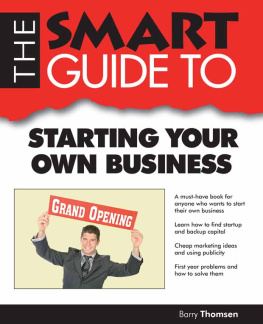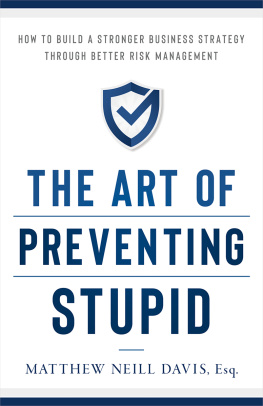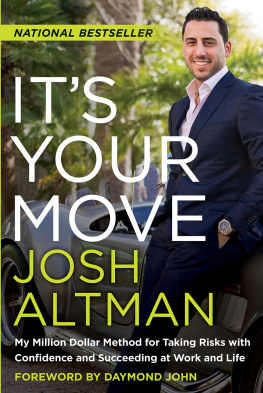Doug Sundheim - Taking Smart Risks: How Sharp Leaders Win When Stakes are High
Here you can read online Doug Sundheim - Taking Smart Risks: How Sharp Leaders Win When Stakes are High full text of the book (entire story) in english for free. Download pdf and epub, get meaning, cover and reviews about this ebook. year: 2013, publisher: McGraw Hill LLC, genre: Business. Description of the work, (preface) as well as reviews are available. Best literature library LitArk.com created for fans of good reading and offers a wide selection of genres:
Romance novel
Science fiction
Adventure
Detective
Science
History
Home and family
Prose
Art
Politics
Computer
Non-fiction
Religion
Business
Children
Humor
Choose a favorite category and find really read worthwhile books. Enjoy immersion in the world of imagination, feel the emotions of the characters or learn something new for yourself, make an fascinating discovery.

- Book:Taking Smart Risks: How Sharp Leaders Win When Stakes are High
- Author:
- Publisher:McGraw Hill LLC
- Genre:
- Year:2013
- Rating:3 / 5
- Favourites:Add to favourites
- Your mark:
Taking Smart Risks: How Sharp Leaders Win When Stakes are High: summary, description and annotation
We offer to read an annotation, description, summary or preface (depends on what the author of the book "Taking Smart Risks: How Sharp Leaders Win When Stakes are High" wrote himself). If you haven't found the necessary information about the book — write in the comments, we will try to find it.
Lead your company to sustainable success by taking the RIGHT RISKS
The business world is in flux, and you have to think and act quickly in order to stay competitive. But the last thing you want to do is make reckless business decisions. You have to find the middle ground. You have to take SMART RISKS.
In this groundbreaking book, leadership expert Doug Sundheim explains how to find that precise point between comfort and danger for generating the sustained ability to work at the highest level of performance.
Taking Smart Risks reveals the secrets to discovering, planning for, and acting upon the kind of risks that will move your company forward and ahead of the competition. Learn how to:
Find Something Worth Fighting ForWhat do you care enough about to risk time, energy, and money to try to make happen? Determining this is half the battle.
See the Future NowClarify your big idea in terms of real objectives, plans, and intended results.
Act Fast, Learn FastMake your move quickly, but be sure you dont squander valuable resources in the process.
Communicate PowerfullyAssume communication will break down at points, plan accordinglyand dont shy away from the tough conversations.
Create a Smart Risk Culture Build teams that share the same mindsets and values about expected smart risk behavior.
Applying Sundheims advice will help you let go of old assumptions, explore new possibilities, move your organization out of its comfort zone, and experience long-term success.
When you take smart risks, you will create. You will innovate. You will grow. And you will WIN.
From Sherwin Williams to Moo.com, Doug Sundheim is onto something here: your work is worth fighting for. A worthy read for everyone in your organization.
Seth Godin, Author, The Icarus Deception
The risk-taking concepts in this book lie at the heart of effective leadership. Using case studies and stories from executives who have been there, done that, Doug Sundheim teaches us that sometimes the most dangerous thing to doin business and lifeis to play it safe.
Marshall Goldsmith, million-selling author of the New York Times bestsellers MOJO and What Got You Here Wont Get You There
Sundheim delivers a message that every business needs to hear right now: excessive risk will kill you, but so will complacency. . . . If youre charged with driving growth in your organization, buy this bookbut more importantly, use it.
Jed Hartman, Group Publisher, Fortune & CNNMoney.com
A spectacular book! The stories were powerful, the advice was crystal clear, and every few pages called me to action. I have bookmarked more pages in Taking Smart Risks than I have in any book since reading Peter Druckers classics.
Michael Hejtmanek, President & CEO, Hasselblad Bron Inc.
Doug Sundheim does an excellent job of demonstrating not only how to take smart risks, but also how to lead the process of risk-takinga critical skill set for leaders today.
Cindy Zollinger, President & CEO, Cornerstone Research
A compelling case for why smart risk taking is so important in todays fast-paced, uncertain world.
Willie Pietersen, Professor, Columbia Business School; former CEO, Tropicana and Seagram USA
Doug Sundheim: author's other books
Who wrote Taking Smart Risks: How Sharp Leaders Win When Stakes are High? Find out the surname, the name of the author of the book and a list of all author's works by series.









